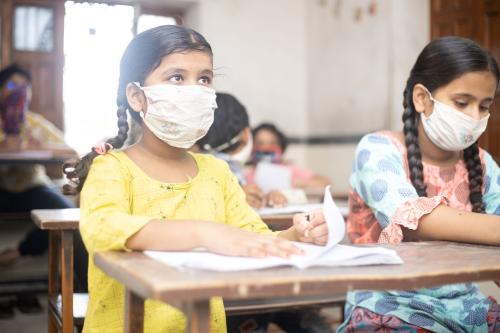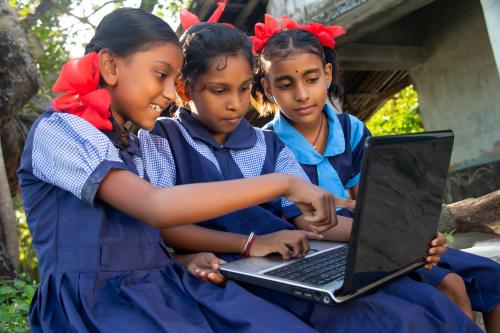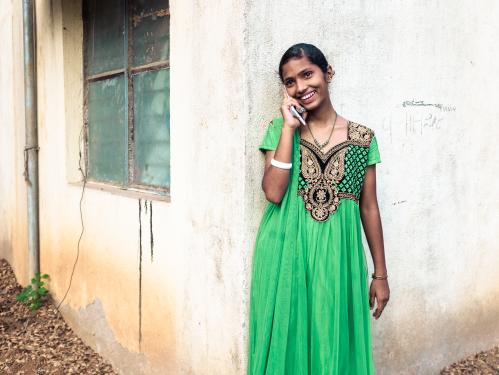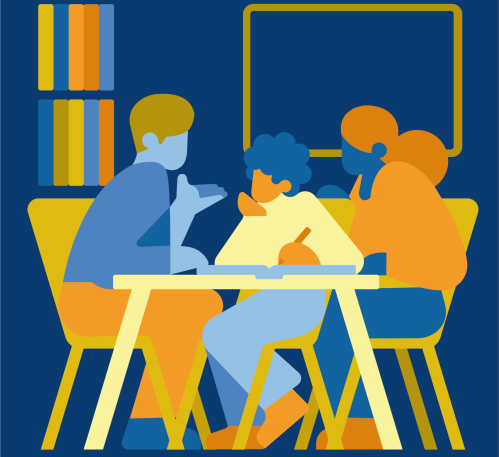This is the second blog in a series on strategies to transform how education is delivered in India in response to the COVID-19 pandemic.
In India, the impact of the COVID-19 pandemic has been disproportionately felt by children in early primary grades who are largely dependent on parents and siblings to access any form of home learning and are the last in priority to return to school. Almost two years of crucial foundational learning has been lost for children in grades one through three, half of whom were struggling to learn to read by age 10 even pre-pandemic.
Why is foundational learning critical?
Foundational reading and mathematical skills are the building blocks for accessing higher-order skills in later stages in learning. Unfortunately, those who miss out on these skills in early grades rarely catch up later. Children in low- and middle-income countries (LMICs) were already falling behind in their foundational years before the pandemic. Most of them stay behind for the remaining school years, leading to school dropouts and the inability to achieve life outcomes like adult earnings, productivity, and better health. The pandemic has only aggravated this problem and created a generational crisis.
Opportunities and challenges with foundational learning in India
In a much-needed move, the Ministry of Education (MoE) in India launched the NIPUN Bharat mission in July 2021, making foundational learning a high priority. The mission calls for basic foundational literacy and numeracy for all grade-three children by 2027. However, this assumes a strong foundation of structured preschool education for all children entering grade one, which is far from the current reality of the Indian education system. Moreover, learning loss due to COVID-19-related school closures has sent children years behind their expected learning levels, requiring targeted interventions to catch them up on what they are learning and how. While well-intentioned, there is an urgent need to revisit the mission’s goals to make them more realistic in the current context.
How might we solve the problem of pandemic induced learning loss in foundational grades?
As children return to school after almost two years of school closures, it is evident they cannot continue to learn the same curriculum that has historically failed to address their learning needs. Based on our experience of working with one of the largest states in India, we at the Language and Learning Foundation (LLF) propose a four-step bridging program to help children overcome the learning loss. This approach uniquely focuses on spreading the learning over multiple years and grades to allow them time to catch up and learn at their own pace.
Step 1: Prioritize what is being learned
A grade-three child entering school for the first time is expected to know content from grades one and two. The first year can be focused on learning the content of grades one and two to build the foundation. In the following year, the remaining content of grades two and three can be learned, followed by some learning of grade four so that by the end of grade four, children attain mastery on some grade-level competencies; Figure 1 illustrates how a potential bridging program could work.
Figure 1. Overview of a 2-year bridging program for FLN
 Note: Instruction in grades two and three will follow an accelerated approach to help children learn key competencies with increased pace.
Note: Instruction in grades two and three will follow an accelerated approach to help children learn key competencies with increased pace.
Source: Language and Learning Foundation.
Step 2: Break it down
The entire curriculum must be broken down into weeklong plans to build flexibility in teaching and learning to account for potential repeated school closures. This allows teachers to assess where children are and resume teaching from where they left off when schools shut down. A modular approach to teaching also helps teachers plan their time effectively through the year.
Step 3: Focus on key skills
While developing a curriculum for bridging, the focus should be on essential skills. For example, at LLF we follow the balanced approach to teaching literacy that focuses on the four basic skills of oral language development, decoding (i.e., connecting a letter with its sound), reading, and expressive writing in every lesson. A skill-based approach to learning literacy ensures children are able to acquire all aspects of the language and apply it to different contexts.
A substantial component of socioemotional learning (SEL) should also be built into the curriculum to help children cope with the negative psychosocial impact of the pandemic. Activities for SEL such as “circle time” with students should be a part of the regular teaching time, especially in the first few months after schools reopen. Research suggests that SEL can increase academic performance—the positive impacts of which last long after the program is implemented.
Step 4: Regularly track learning levels
Regular classroom assessment must be included as a critical part of the curriculum to help teachers modify their teaching according to their students’ needs. Additionally, assessing children’s learning as they return after a disruption in schooling can help teachers identify where children are and resume from where they left off before schools shut down.
Along with the design, the implementation of a two-year bridge program must be thoughtfully planned to ensure the purpose is met. We believe the implementation plan must focus on:
- Upskilling teachers through training and on the job coaching.
- Equipping teachers with structured tools such as teacher guides.
- Providing learning support material such as workbooks to students.
- Consistently monitoring the program and incorporating feedback into the design.
- Engaging parents to support learning at home and managing student behavior.
A carefully designed and thoughtfully executed bridge program can be instrumental in turning learning loss into learning gains.
For years, our children have been playing catch-up with what they are expected to achieve by a certain age and grade level. As we come out of this pandemic, we cannot expect our children to run before they can walk. It is important to step back, learn from our mistakes, and design a system that helps our children thrive rather than survive. We believe this slow-paced, two-year bridge program could pave the way for education systems—in both India and in other corners of the globe.









Commentary
4-step bridge program holds promise for addressing foundational learning in post-pandemic India
February 4, 2022